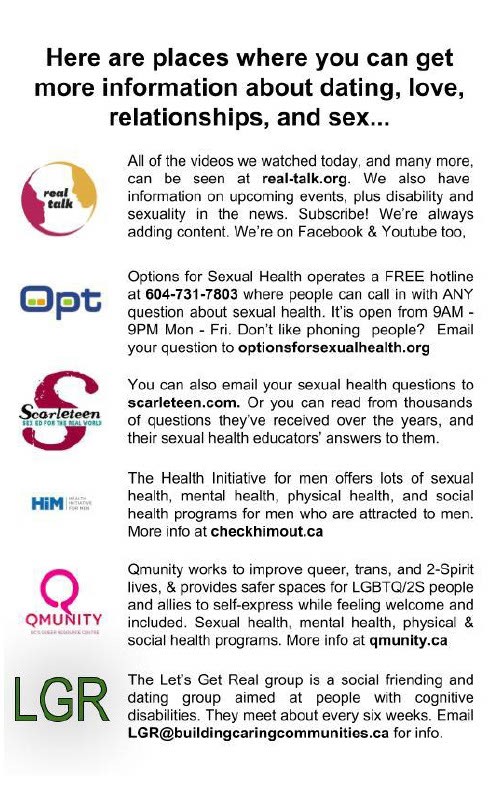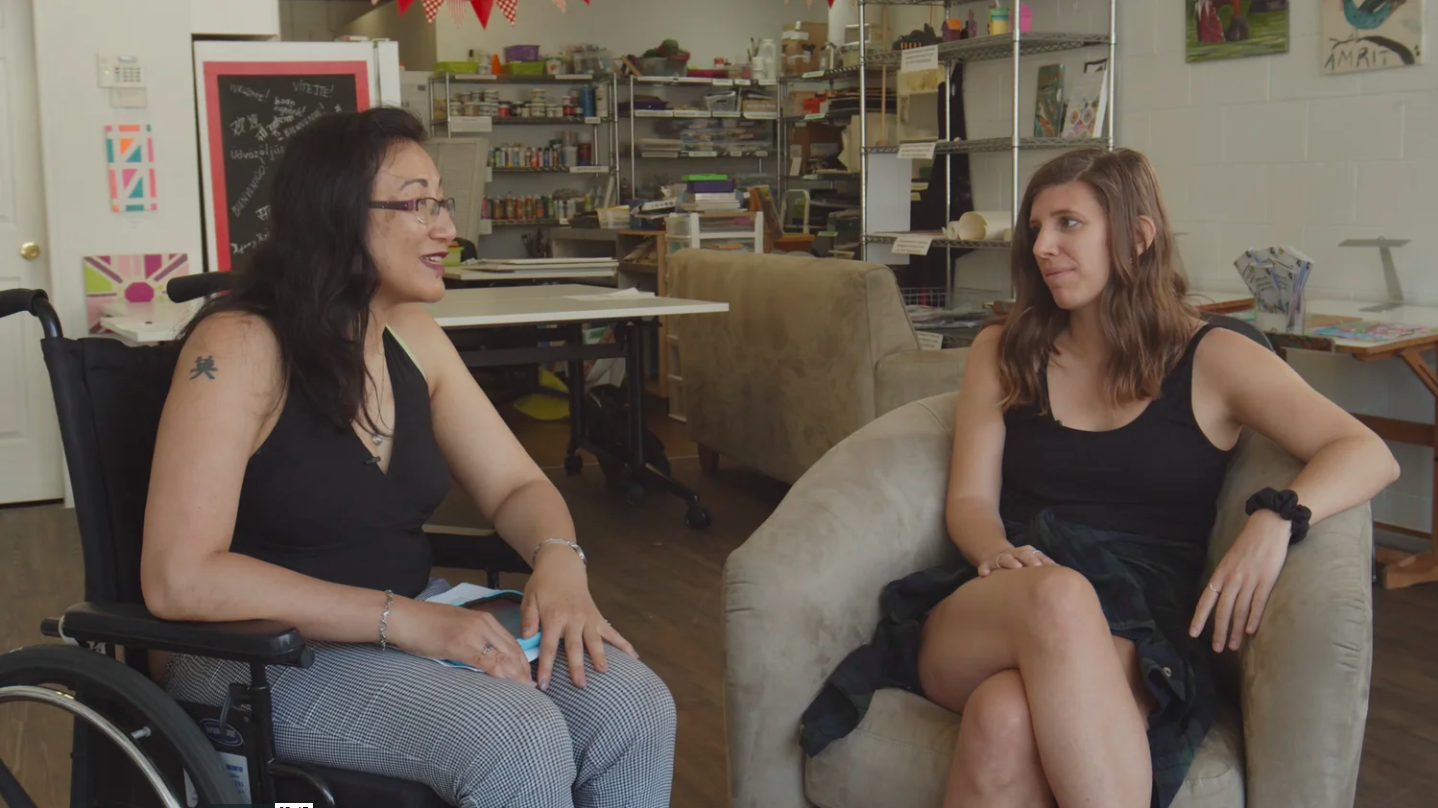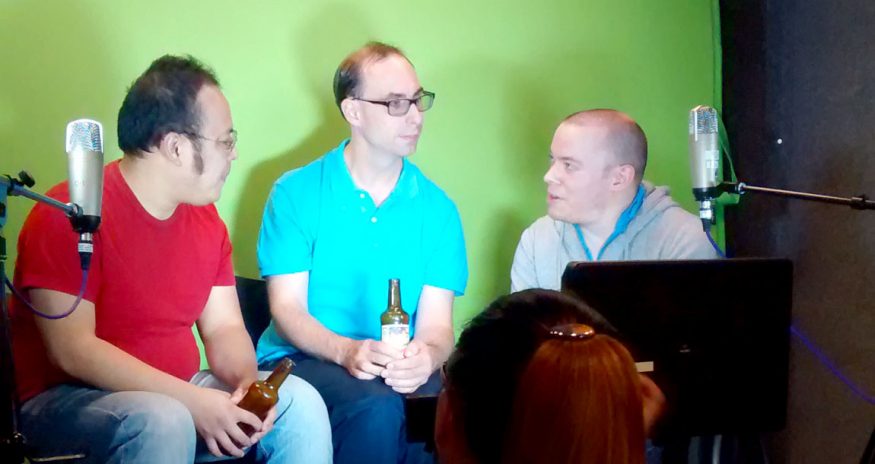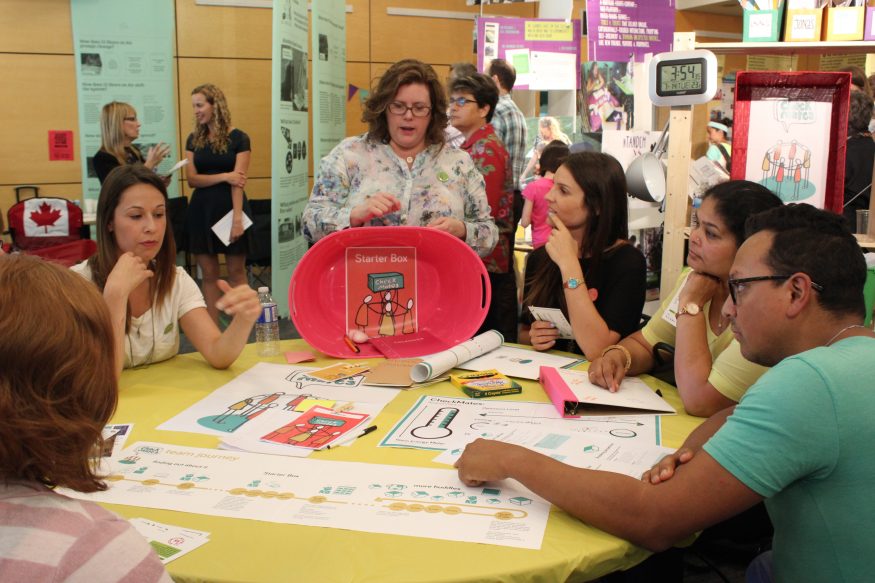In terms of iterations, probably the best example of a significant change in
Real Talk’s touchpoints, or user-facing materials, is the way we present sexual health resources.
One goal of a Real Talk Pizza Party is to get participants thinking about where they can continue to get sexual health support once our event is over – whether it’s from a trustworthy individual in their life or from an organization. Initially we provided resource lists in our swag bags, with the idea that people might pick a resource from this list and contact them.
Following a review of all of our touchpoints, this resource list stood out as being particularly dry and institutional. The re-frame that made most sense was to start with the user and their curiosities, rather than the resources and what they provide.
We envisioned creating some comic books with stories about several different adults with cognitive disabilities. We wanted to show how their individual interests and access needs inform which sexual health resources they make use of, and the kind of support they receive to use them. Over the next 9-months, these comic books were scripted, storyboarded, and finally brought into being as hard copy paper touchpoints that have replaced the resource list in our swag bags. The re-frame that made most sense as we redesigned our sexual health resource list was to start with the user and their curiosities, rather than the resources and what they provide.
We also made the comic stories into short videos that can be viewed on our website,
here.
While these
comics are better than the original resource list, the 9-month creation period did not represent a limber, fast response to the initial problem. Neither did we have as much scope as we’d have liked to for an iterative co-design process with end users. Limited budgets for graphic design and limited staffing hours for user research were the main factors here.
One example of an iteration that is more immediately user-research-driven is our conversation video creation process.
Our main goal with Real Talk is to de-stigmatize open conversations about dating, love, relationships, and sex. To this end, we film unscripted videos of people of all abilities having conversations on these topics. Specific topics that get discussed in our conversation videos are driven by user interest and user queries. At our pizza parties, facilitators take note of the topics that participants want to discuss. This information is collected in our post-event reflection tool. Additionally, at the end of the workshop, participants are invited to make talk-back videos if they:
- Want to discuss something they learned in the workshop.
- Want to share some knowledge or experience with other participants.
- Want to suggest a new topic for a conversation video.
So for example in this talkback video, a staff member talks about wanting to see some content on internet dating.
And within two months, we have created it:
We’ll have another example up in a week or so. This one will be an example of a person with a cognitive disability – rather than a staff member – making a talkback video of what she would like to see in a future conversation video, followed by a conversation video on that very topic.







